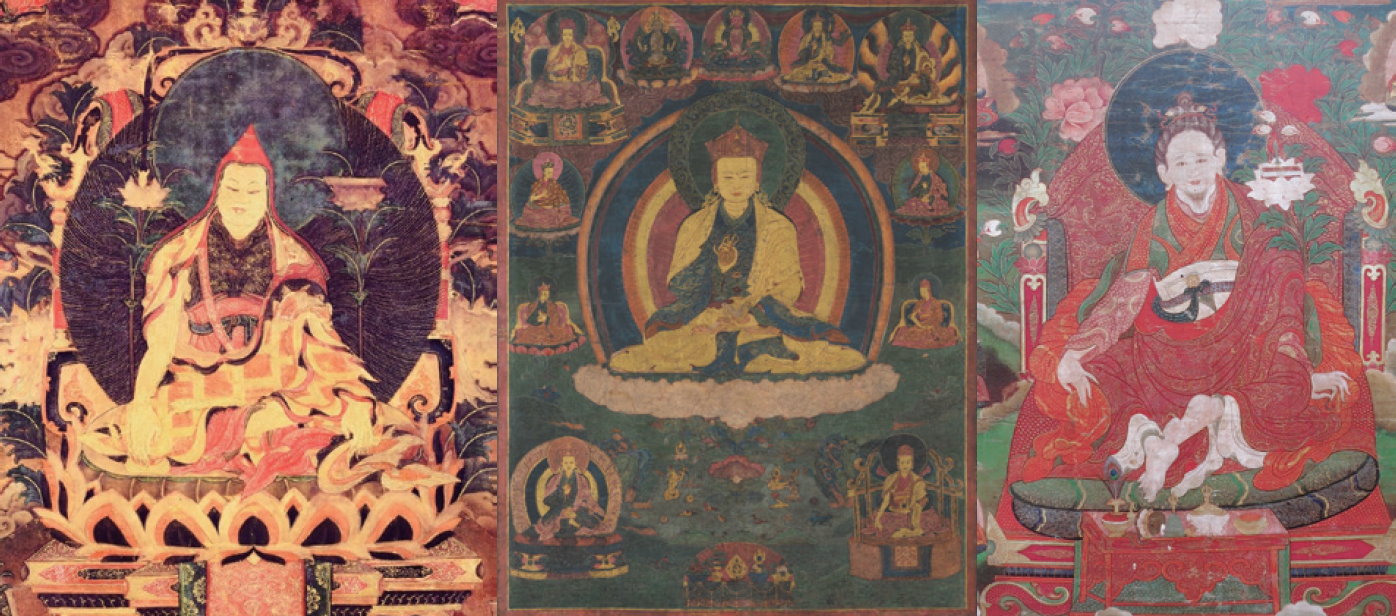The Inspiration

Nyichang Rinpoche’s Vision
“Since ancient times in Tibet, the teachings of the Buddha have been maintained by both ordained monks and lay tantric practitioners. In the history of Tibet, large-scale persecution of Buddhism was carried out during the reign of King Langdarma in the 9th century, when monasteries were destroyed, monks were forced to disrobe and return to their homes—Buddhism was in danger of disappearing. During this period, the teachings were preserved and kept alive for the next generation mainly by the lay Buddhism practitioners. The importance of the role they played cannot be overstated.
I am an old Tibetan Buddhist monk. I completed my education in a monastic situation when Tibet was still independent. My initial plan was to establish a monastic college and research institute for the benefit of the monks, but times have changed and nowadays the lay people are becoming more and more deeply interested in learning and practicing Buddhism. In Japan as well, there are many lay followers who are learning and practicing the Buddhism of the Himalayan region.
In consideration of this situation, just as Dzongsar Khyentse Rinpoche is also thinking, I have come to feel that it would be very meaningful to communicate the Buddha’s teachings to the next and future generations in a style that is appropriate to the conditions of the present age, namely by focusing on spreading Buddhism more widely among the non-ordained laypeople. Those who live at home have families and raise children. I strongly believe that the living teachings grounded in the context of daily life will take root and naturally continue on to the next and future generations.
In the region of India and Nepal, where Buddha Pada is located, temples housing many monks have been established with support from all over the world, and it is wonderful to note that every temple has a monastic college where enthusiastic efforts are made to maintain and transmit the academic tradition to the next generation. These precious teachings, passed down for a thousand years in the Himalayan region, were in great danger of dying out during the destruction of Buddhism in Tibet in the 20th century, but once again, the precious light of the Dharma quietly shines on at the foot of the Himalayas.
The traditional system of Buddhism centered on the training of the monks is left to these monasteries, and our mission at Buddha Pada is to bring the light of Buddhism to places where there has not been much connection with Buddhism until now. Dzongsar Khyentse Rinpoche is uniquely able to lead all kinds of people to Buddhism, and I am truly fortunate to be guided by his vast compassion and deep wisdom. As I have remained in Japan for 46 years, I did not have the opportunity to train any students or disciples in India or Nepal after my exile from Tibet. But now, thanks to Khyentse Rinpoche, many talented and highly motivate staff are working day and night to help Palri Tekchog Ling and Buddha Pada fulfill our role in society—I am certain they will actualize the vision shared by Khyentse Rinpoche and myself.”

Palri Tekchog Ling and the Teachings
Among the great scholar-practitioners of the Nyingmapa (the oldest Tibetan Buddhist tradition) who were also representative of the non-sectarian Rimé movement, three outstanding representatives are Longchenpa, Jigme Lingpa and Sherap Özer.
Sherap Özer founded the Palri Tekchen Ling monastery in the Central Tibetan Chongje Valley in 1571. This monastery was counted as one of the “seven major monasteries” of the Nyingma lineage, and played a particularly important role as the main academic institute in central Tibet until the establishment of Dorje Drak monastery in 1632 and then Mindroling monastery in 1676.
After some time, Palri Tekchen Ling fell into decline, to the extent that the collective expression changed to “the six major Nyingmapa monasteries”. All six of these major monasteries have been resurrected in India and Nepal and are serving to revive the Buddhist tradition in those countries, leaving only Palri Tekchen Ling unrepresented outside of Tibet. Considering the historically important role of this monastery in leading the non-sectarian Rimé movement, I determined to establish the modern Palri Tekchok Ling in Kalimpong, West Bengal State, India to preserve this lineage for the future.
The backbone of research and Buddhist education at Pelri Tekchok Ling consists of the teachings of three great scholarly saints, known as the “Three Lights” because each of their names includes the word for light (‘od zer in Tibetan). These three saints are “Drime Özer” (Dri med ‘od zer, also known as Longchen Rabjam), “Kyentse Özer” (mKhyen brtse ’od zer, also known as Jigme Lingpa) and “Trengpo Tertön Sherap Özer” (‘phreng po gter ston shes-rab ‘od zer)”.
※ The Tankha paintings on the top are from left: “Drime Özer” (Dri med ‘od zer, also known as Longchen Rabjam), “Trengpo Tertön Sherap Özer” (‘phreng po gter ston shes-rab ‘od zer)”,and “Kyentse Özer” (mKhyen brtse ’od zer, also known as Jigme Lingpa).
